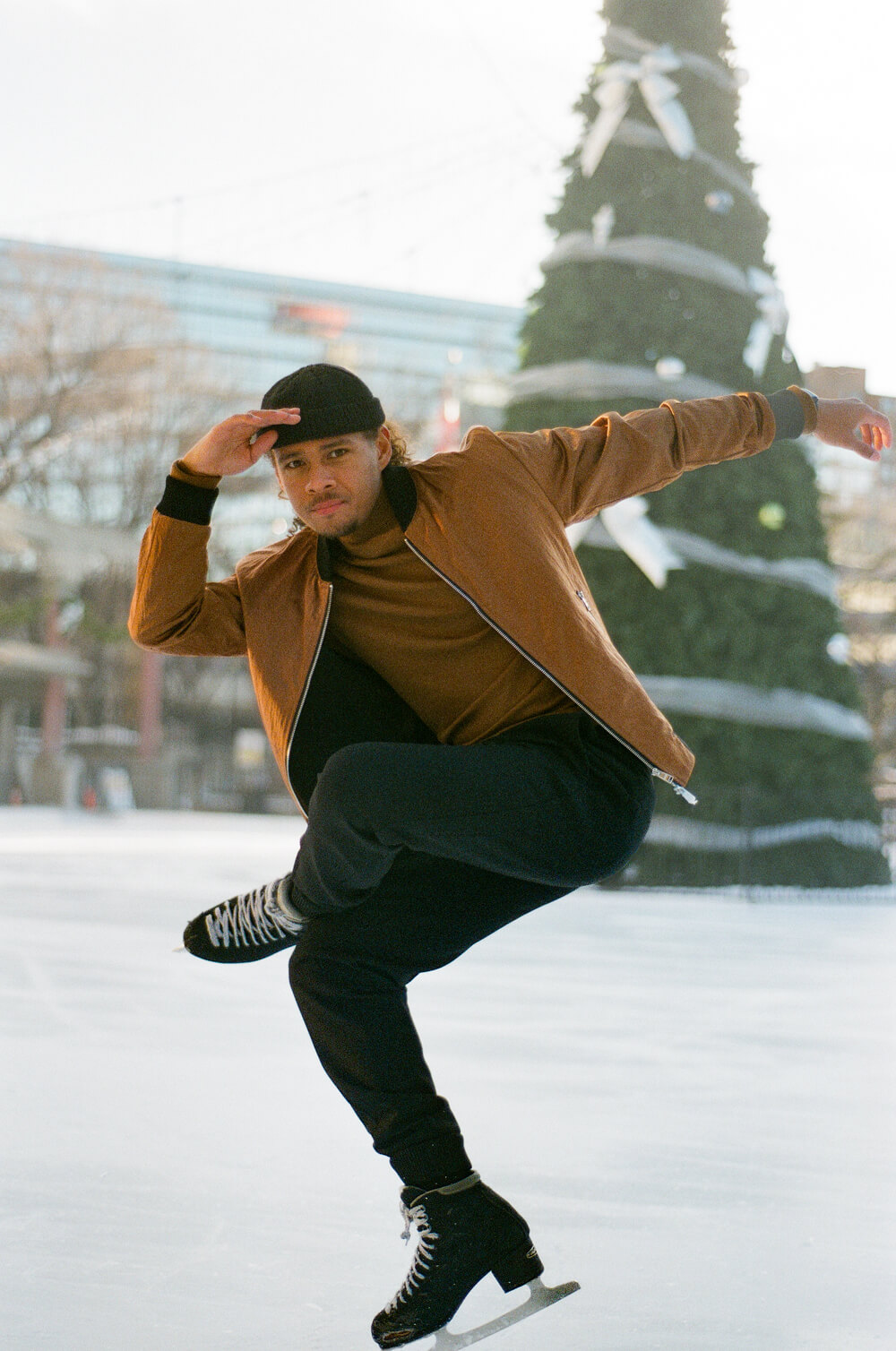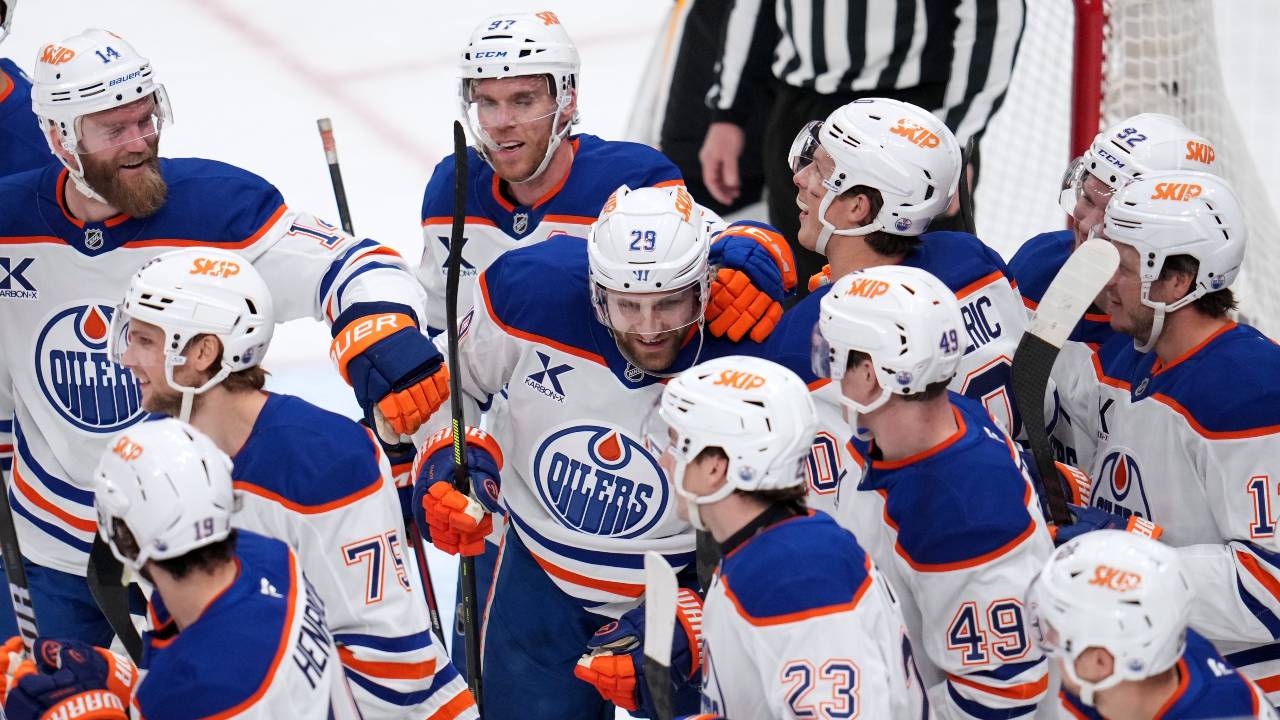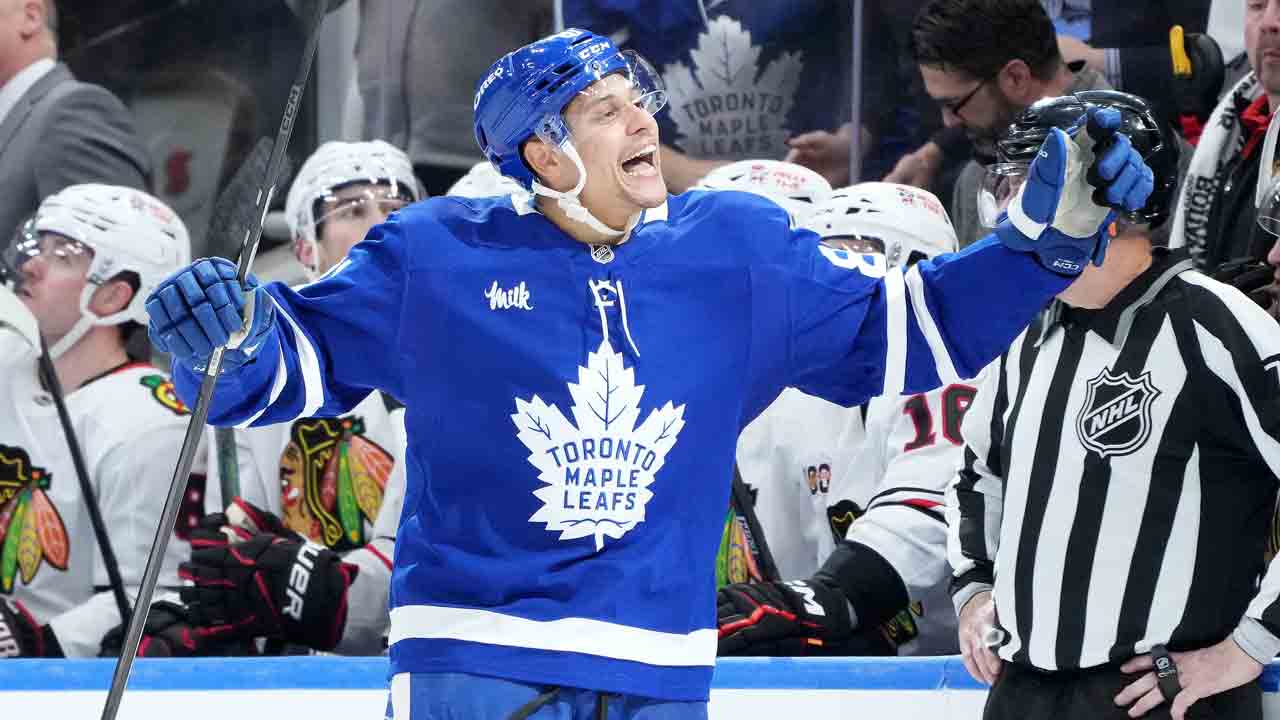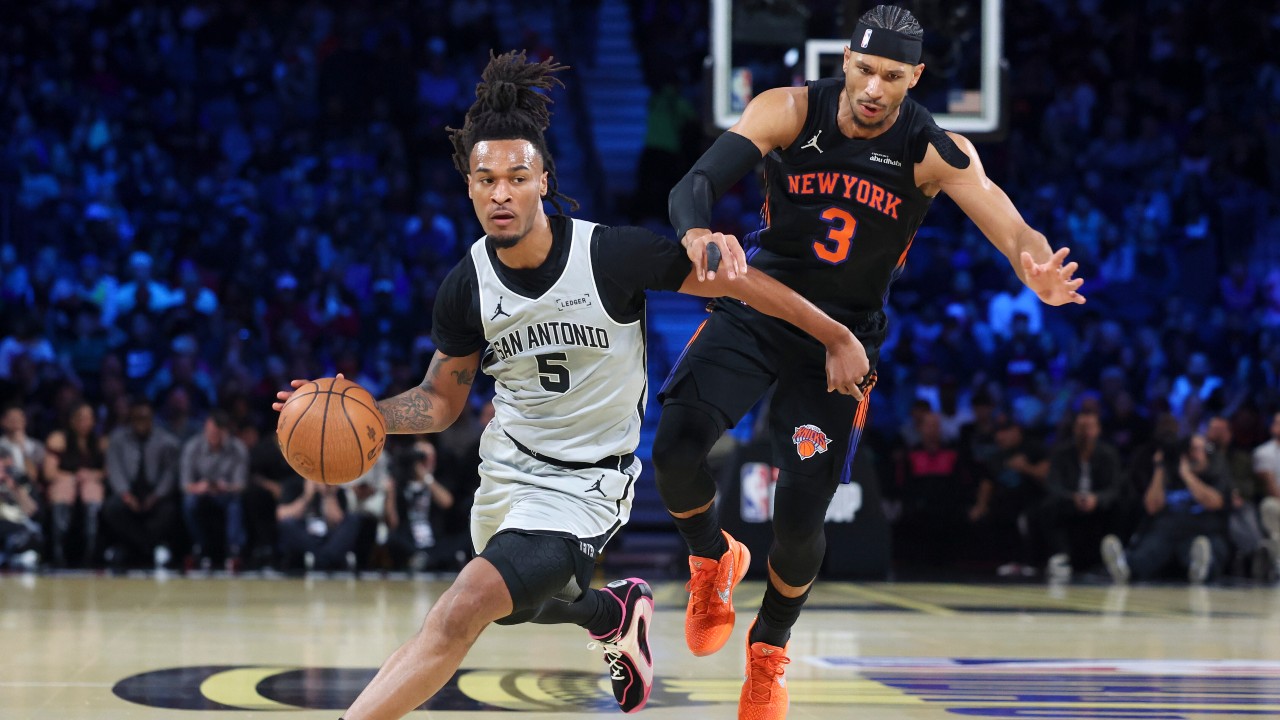
AUTHENTIC SKATING
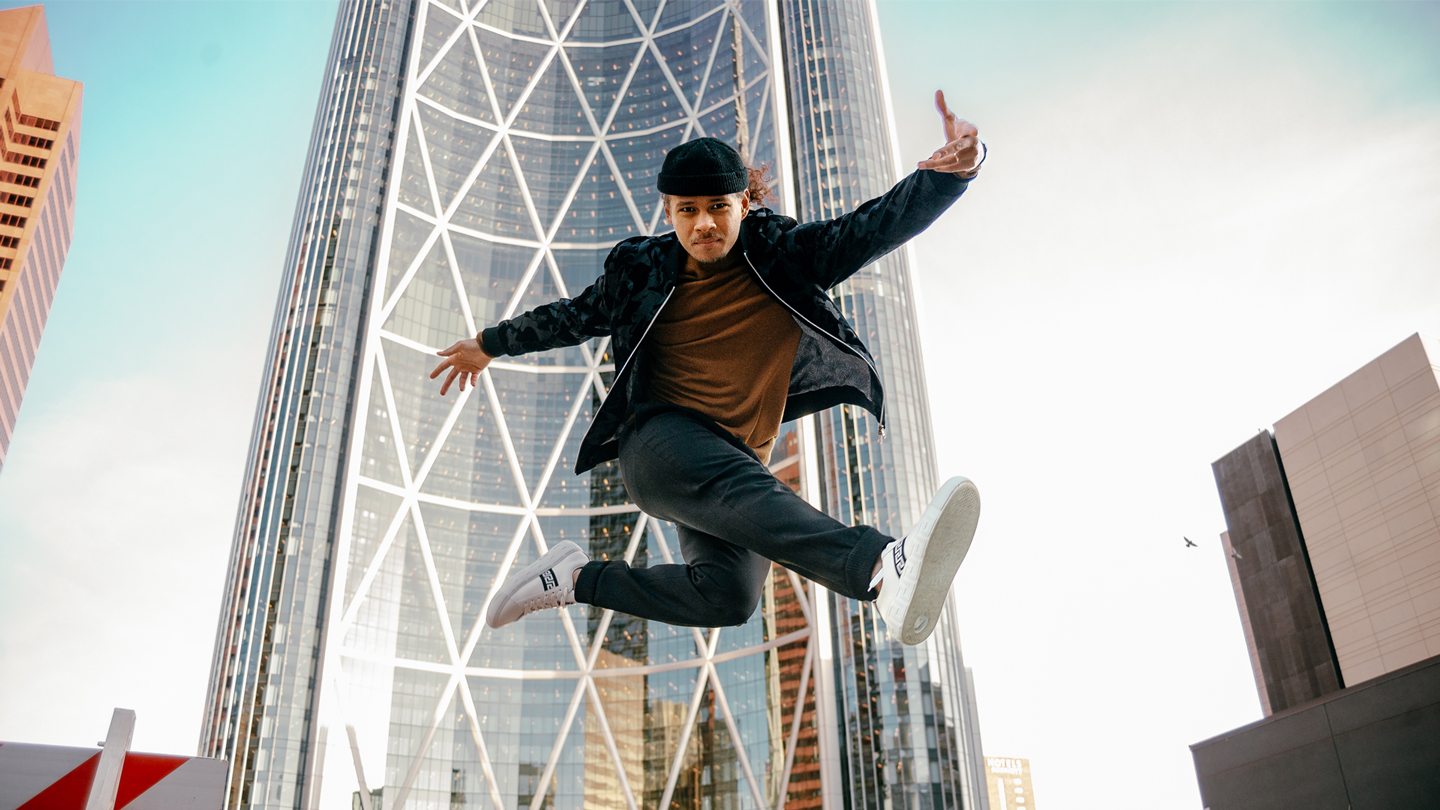
I
f you’ve ever thrown on a jersey and stepped out onto the field or the ice for the first time, you know that sports can be intimidating. And when you don’t see anyone who looks like you — no teammates, maybe even no role models — it can make those first steps even more challenging. You’re not just doubting whether you can hold your own, you’re wondering whether a person like you even belongs out there at all.
It’s safe to say that for Black folks, figure skating hasn’t been the most welcoming sport. There have been a handful of Black athletes over the years that have managed to find success at the highest levels, including Debi Thomas, Surya Bonaly, Rory Flack and Robin Szolkowy, but they have been few and far between. Figure skating remains a sport that’s pretty short on melanin.
Canadian skater Elladj Baldé is looking to change that, flipping the culture of figure skating and working to make the sport more inclusive. After years of being told how to look, how to dress and how to skate, the former junior national champion left competition behind and found a new freedom on the ice. His videos have racked up millions of views on social media and created new lanes for Black youth to find their way to figure skating and for Black culture to find space in the sport.
It was a long journey that brought the 31-year-old Baldé to this place, and there is still work to be done.
TAGWA MOYO: What are your first memories of figure skating?
ELLADJ BALDÉ: I want to say the first few times I skated I really enjoyed it because I felt free. I was just outdoors with my mom, playing. She was teaching me a couple spins, things like that, and I felt very comfortable on the ice very fast. So I enjoyed the freedom and the playfulness of skating, but very quickly, six months into learning how to skate, I was already competing, and so it got serious very quickly.
Growing up with Russian culture [Editor’s note: Baldé was born in Moscow.] and skating being such a big sport in Russia, the pressure of being an Olympic champion and world champion was instilled in me almost immediately. And that is something that I didn’t fully enjoy. The first couple years of skating, I hated it because of how intense it was. And that [intensity]kind of fueled a lot of decisions and actions I took later in my life to try to fit a mold because I was conditioned and wanted to be kind of that Olympic champion.
That must have been a lot for you, especially since you started at six years old.
Yeah, I started at six, and by six and a half I was already competing. Obviously I was dead last. I had no skills, I had no idea what I was doing. It was really way too early for me to start competing. But my coach was Russian and my mom, again, in the culture of figure skating in Russia, you do the sport to be world champion or Olympic champion. In Russia, it’s a way out of poverty. And my parents being immigrants in Canada, it almost had a very similar intent: doing skating to be successful and to be able to help the family be in a better situation. So that kind of pressure was heavy.
And around the age of like nine or 10 I started winning competitions. I started landing jumps that kids my age weren’t landing. And so at that point, I started to fall in love with the technical part of the sport. I loved jumping and landing new jumps and that kind of started fueling my desire to want to stay in skating.
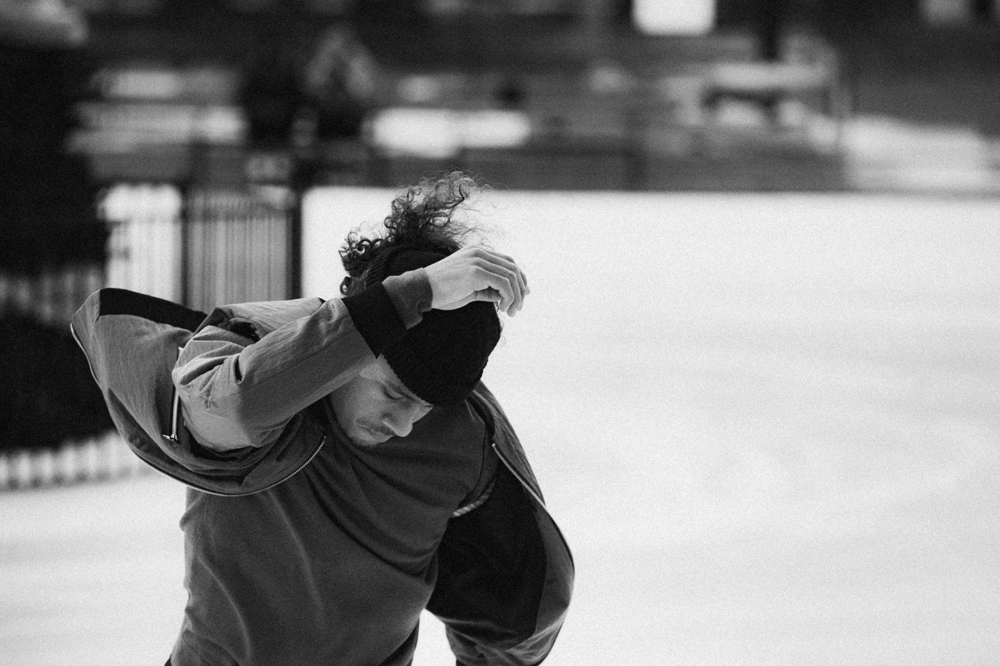
So your mother and the Russian side really got you into the sport and applied that pressure, but what were you getting from your dad’s side?
My father being African, for him it was all about school and education. Not that he didn’t care that I was skating, but that wasn’t as important as school. My dad, in order to get out of Guinea, he did it with his education. He was able to go to the Soviet Union to further his education, a university degree was kind of his way out of the village and his way out of Africa. So education was always number one for my dad. And so I had the pressure coming on both sides of being a high-level skater right away and then performing in school. And so yeah, that was a lot.
How did you deal with that pressure?
I think pressure in general is very difficult to deal with, and we all have to find our own ways to manage it. For me, I had to remind myself why I was skating. At a certain point in my life I really started loving skating, especially when I started delving into myself as an artist and really embracing who I was: a bi-racial kid, a Black kid on the ice. When I started embracing all of these things, I was skating from a different space, a different perspective, and that allowed me to kind of get rid of the pressure.
Was there ever a point where you looked around and realized, I’m not like everybody else here?
Definitely. I mean, for the longest time I was the only Black kid on the ice. There were other people from different cultures around me, but in terms of someone seen in society as a Black kid, I was the only one for many years. When I was younger, I struggled with being able to be who I truly wanted to be. On the ice, I was skating to classical music, but off the ice, I was listening to Tupac, Biggie, Snoop Dogg, rap, hip hop, R&B, Usher. I was dancing in my room, trying to copy all these guys doing hip-hop and break dance. I had this passion for that style of movement and that style of music, but whenever I was on the ice, it was never an option for me to skate with that type of music and that type of movement. So I always felt like there was a part of me that wasn’t truly able to be myself or be authentic on the ice.
And there are people within the sport that say that when I skate around — because I don’t have the proper posture — I look like a monkey. That reinforces this thing: what you like and who you are doesn’t necessarily fit within the sport. Or when they say I can’t have my hair out because it’s dirty or it’s nappy. Hearing those things all the time subconsciously reinforces the idea that I have to fit a certain mold if I want to be successful.
For a very long time I changed everything about myself to try and fit the mold because the people who were successful in skating were white Canadians or white Europeans. And so for me in my head, if I wanted to be successful, I needed to be more like that. Success came at the detriment of me being myself, and the crazy thing is that I was rewarded for these things. Whenever I was skating in those ways, I was winning competitions. So that again reinforced this idea that I couldn’t truly be myself. Especially when you’re a kid and you don’t know how to handle these things. Again, when there’s lack of representation, it’s like you have no ground to stand on. You feel like you just have to keep it all in and you have no idea what to do with all of that shame in a way.
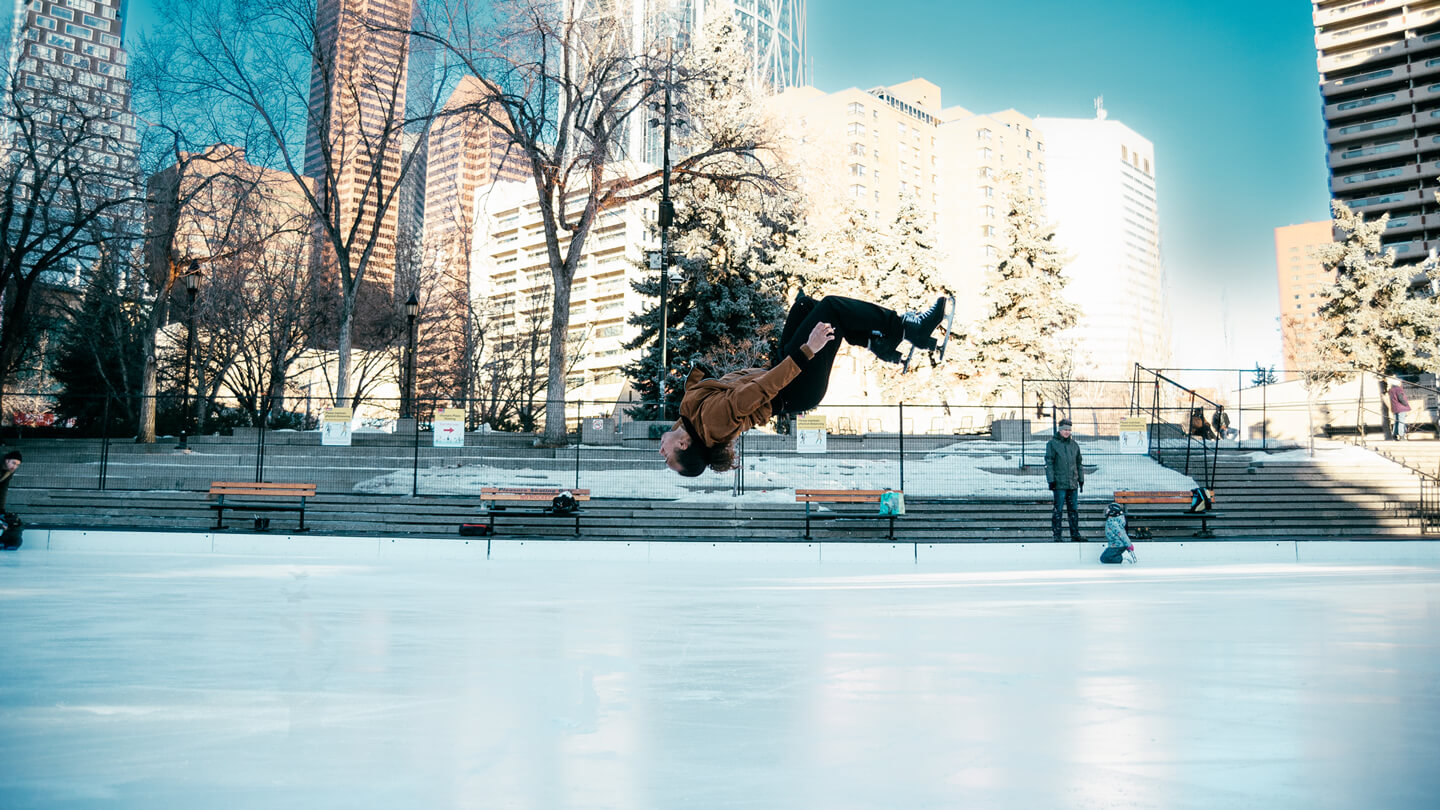
Given what you’ve been through, how does it feel to now be acknowledged for being truly you with your videos — where you’re dancing hip hop, you’re crip walking on the ice, you’re krumping and you’re doing all of that?
It’s just freedom. It equals freedom. Being able to be myself and being able to fully just embrace who I am as a human being and share that with the world. But the journey to that was a very long one and a very hard one. It wasn’t until I was 16 or 17, where I saw this guy skate in front of me. He was a Black man, and I’d never seen someone skate like him. He was skating to hip hop. He was popping on the ice. He was doing quads, like all these different technical elements, but he was completely different than everyone else. And that day I finally saw for the first time that I could be that too, and I started my journey of wanting to be more and more of myself on the ice.
And that took years. It took me up until I was 24, 25, 26 to actually start really feeling like I could be myself on the ice. And then it wasn’t until social media where I completely broke out of all the chains and the barriers. I was able to just completely be myself and skate to what I want to skate to and to find complete freedom in my sport. And that’s kind of healed my relationship with sport as well.
Hopefully any kids reading this can be encouraged by your story — and not just the athletes but also their coaches can see that there are other ways of being out there.
Coaches have to be educated on what it’s like to have a Black, Indigenous or person of color as their athlete. The experiences of such athletes will be different and they need their coaches to encourage them to bring out the authentic parts of themselves. This will go a long way towards the athletes finding fulfillment in their careers, because when athletes are trying to be someone else, the experience is just so hard and heavy. When coaches educate themselves and find ways to bring out the authenticity of every skater, it sure helps and can change the sport for the better.
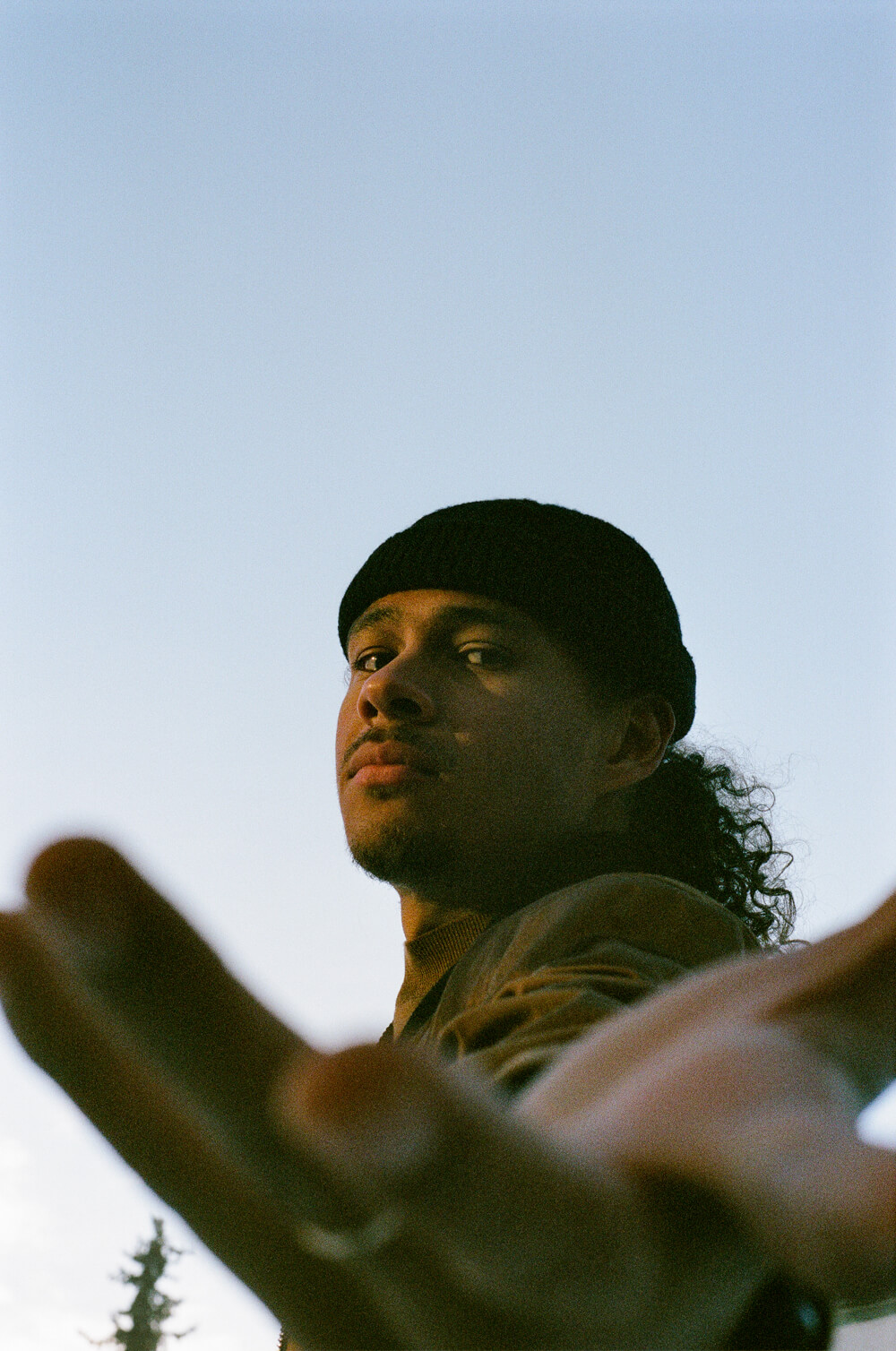
How important do you think it is to be doing what you are doing for the next generation?
It’s huge. One of the most beautiful things I think that has happened to me is being given the opportunity to show someone that there isn’t just one path that you have to take. For example, in skating, there’s a path of the Olympics. And usually that’s the only path that you have to be successful in skating. But I found a way to chart a brand new path that’s never existed. And I think the powerful message here is that if a path doesn’t exist in front of you, you can create it for yourself. You can create it in your environment and in your industry. If you find that depth of authenticity in yourself, you can be successful in ways that people have never been before. And I think that’s super empowering because again, when there’s only one path, things can feel really confined. So I think it’s really important for kids to see that.
How would you define your skating style?
I think for me, I’m just skating with pure authenticity. It’s authentic skating, if you want to call it that. Authentic skating because yes, I do hip hop on the ice, but I also do very lyrical, classical things to classic music, but I do them in my own way. And I think being able to do everything and do it in the way that I want to do it, comes from that place of authenticity.
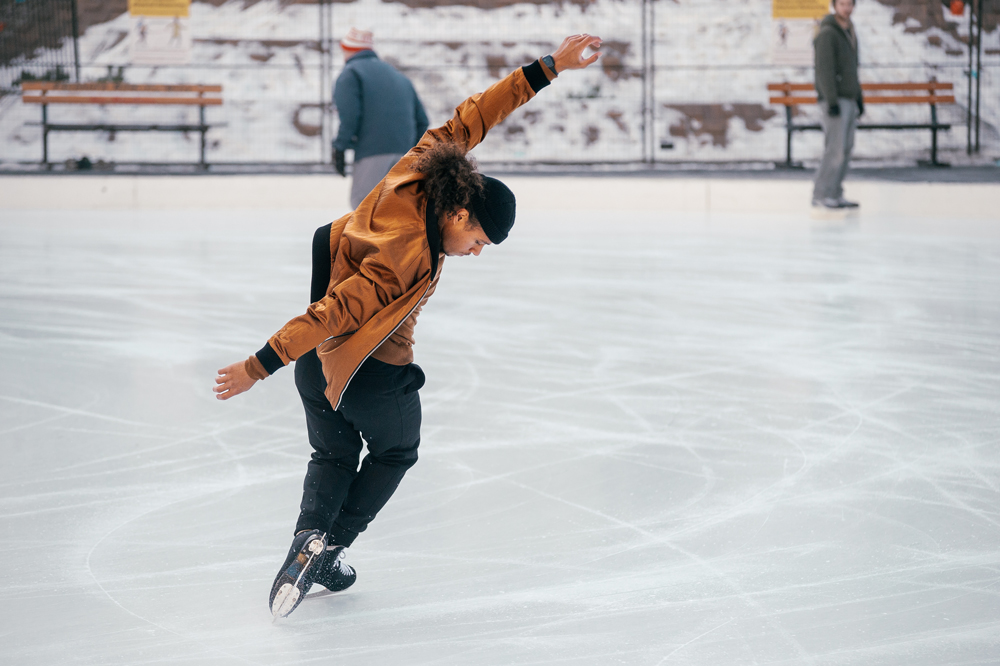
In 2020, after the murder of George Floyd, you saw society acknowledge the Black struggle and bring it to the forefront. Two years have passed. Have you seen enough change in the figure skating community?
I think when George Floyd passed, like you said, there was this rise in awareness, and finally this moment of acknowledging the Black experience in North America and in the world. And at first, when it all happened, the figure skating community was silent. No one was talking about it, no one was saying anything. And it was like people were acting as if nothing had happened, whereas the whole world was on fire. And so I remember a friend of mine, [retired Canadian ice dancer]Asher Hill, who had experienced some really, really difficult things with Skate Canada, we had a phone call and we were like, excuse my language, but, “This is bullshit.” We need to start the conversation within our environment, within our culture, within the figure skating ecosystem.”
So we did. We started connecting with other Black skaters around the world, and we started to realize that whether you were from France, England, Canada or the U.S., if you were Black, you had very similar experiences. So we started creating this community of skaters that were going to come together so that we can heal. But also we wanted to hold national sport organizations, like Skate Canada and U.S. Figure Skating, accountable for making change. Because they put out a statement, and as we all know, at that time, everyone was putting out statements with no backbone. It was very performative. And so we saw Skate Canada do that, and we essentially asked them and U.S. Figure Skating: What are you guys going to do? And we want to be there to make sure that you deliver in your promises. Because if you say that and nothing changes, the next generation of skaters are going to keep experiencing the same things as we did.
So, to answer your question: Yes, there has been change, at least in Canada. I’ve been part of the equity, diversity and inclusion working group. And there have been things in place and initiatives that have been helping Black skaters and Indigenous skaters and people of color.
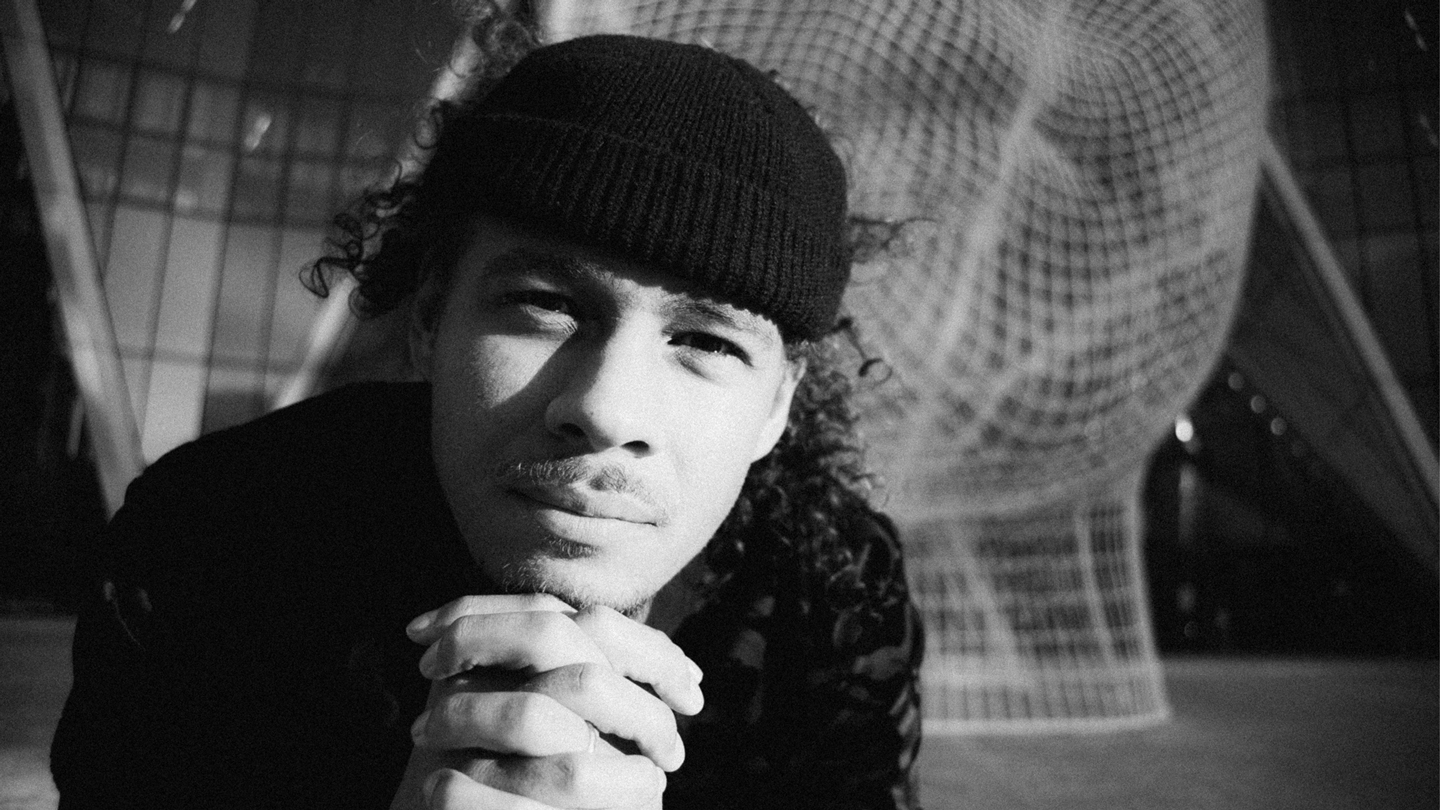
The 2022 Olympics are here. How important is it to have more Black folks like yourself visible during these Games?
I think it’s huge to have more Black skaters being seen at the Olympics. When I was growing up, I only saw white skaters when I watched the Olympics. And again, we talked about how important representation is, imagine what it will feel like for a young Black kid to sit in their living room this winter watching the Olympics and see someone like Vanessa James, a Canadian skater, on the ice. It is huge for Black kids to be able to look at that and say, “That could be me someday.” It is huge.
What else is coming up for you?
Well, there’s one more thing I want to talk about. In addition to being a co-founder of the Figure Skating Diversity and Inclusion Alliance, I am currently doing a lot of work with the Skate Global Foundation. Essentially, it’s a foundation that my wife and I started and the work falls under three pillars: Equity, Diversity and Inclusion, Mental Health and Climate Change. In the first project we did, we partnered with a construction company called EllisDon to build and upgrade outdoor rinks across Canada, prioritizing underserved communities — because access to skating and access to rinks is something that has always been an issue in underserved communities. For myself growing up, if I didn’t have my mom that was available to take the bus with me in the middle of the winter to take me to another community to skate, I probably wouldn’t be skating now. And so having rinks that are accessible to kids in those communities is extremely important to introducing them to the sport. In addition, we plan to loan skates to kids in these communities for free. This way, kids who would otherwise have no access will be able to try the sport at no cost. We had an event, we opened up our first rink on Dec. 17 in Calgary, in the Northeast. And we’re planning on opening rinks across Canada.
I’m also going to be on Stars on Ice Canada, the tour, this year for the first time. I’m the only non-Canadian champion or Olympic medalist or world champion or world medalist to be on the full tour. And I’m only the second Black skater to have ever been on Stars on Ice — and I’m the first Black male. Again, we’re breaking barriers. In 1992, Debi Thomas, a world champion and a Black skater, was part of the tour. No [Black skater] has been on since.
You’re inspiring a generation.
The fact that I’m able to reach millions of people through social media makes it that much more special. And a lot of the people that follow me are Black people that never were interested in skating or even watched skating. I get a lot of messages, such as, “I’ve picked up my first pair of skates. I love skating and I never skated, but now I want to actually try to.” The power of social media is huge and it changed my life and I want to use it to change other people’s lives as well.
